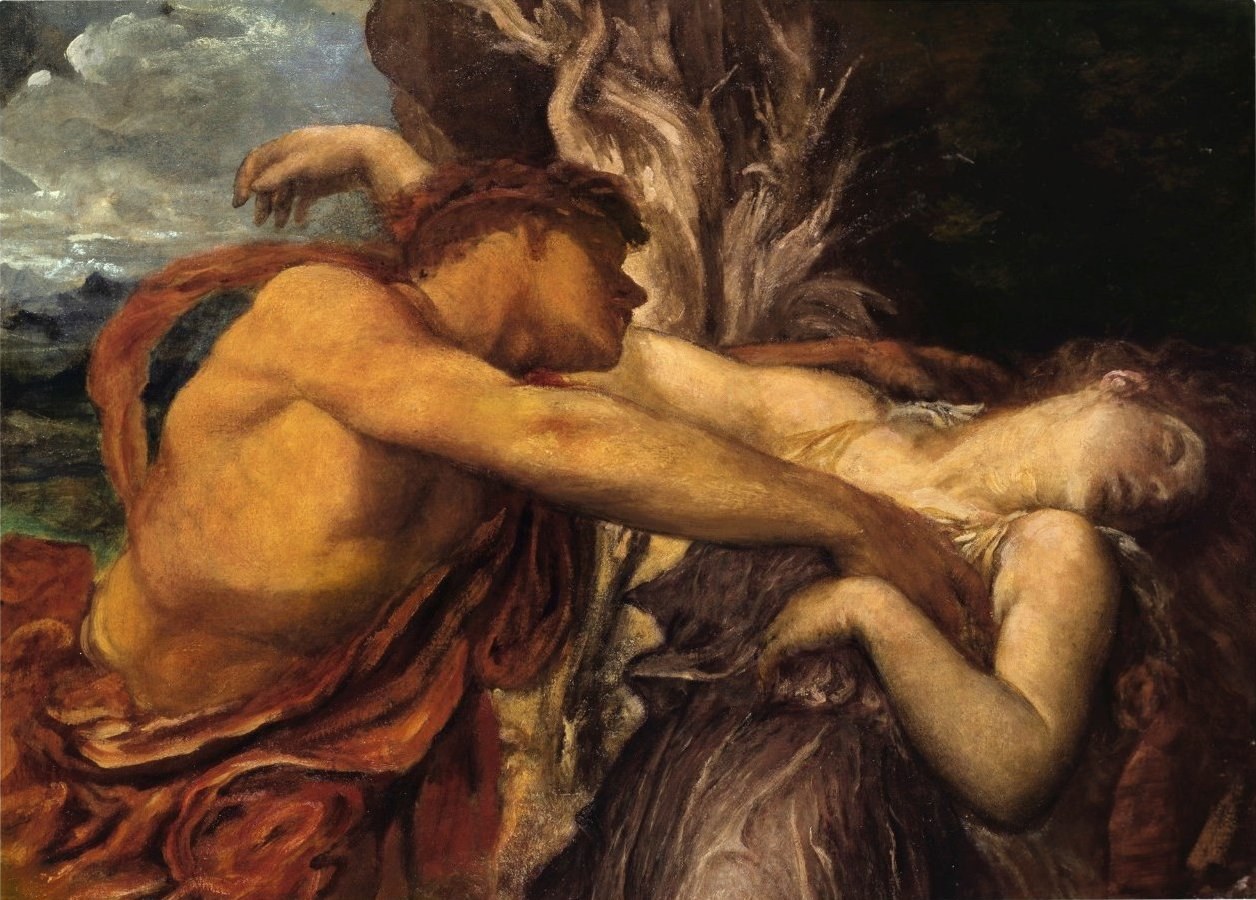'he would rather die and rejoin the Wili than be parted from her' (Giselle, Act 2 ,Scene 12)
There are parallels between the stories of Orpheus and Eurydice and Giselle. Both Giselle and Eurydice are led to death through dance, in Ovid's telling of the myth, on the day she married Orpheus, Eurydice bitten by a snake while she was in the forest dancing with the naiads. Albrecht, like Orpheus, goes on a dangerous journey into the darkness of the underworld where, unlike Orpheus who has a chance to bring back his lover to the earth, for Albrecht the danger is not losing Giselle, but rather losing his own life.
Both stories place at their centre the power of love and the power of art to transcend darkness. However while the Orpheus myth is usually centred on Orpheus the poet leading Eurydice to safety, in the ballet it is Giselle who, dancing slowly to bring the sunrise, leads Albrecht towards the sun.
Images of Orpheus and Eurydice show different moments in their journey, sometimes an image unites the lovers in the moment just before they lose each other. The card image above by Filippo Pedrini (1763)of Orpheus and Eurydice describes such a moment in a complex series of counterintuitive actions, Pedrini describes the difficulty of what perhaps first appeared a simple condition; that Orpheus should not look back at Eurydice until they had reached the earth and the sun. The lovers are joined through the intimacy of their hands but they spiral away from each other while also moving forward. To add to this, they are neither looking at what is ahead of them nor looking at each other, instead they look anywhere but into each others eyes.
Pedrini suspends them in time and Sally Banes writes about a similar moment of suspension in Act 2 when Giselle and Albrecht first dance together creating a kind of parallel dimension outside of the narrative (Sally Banes, Dancing Women, p30).
Other images show Eurydice falling back, Kate Flatt teaching us the waltz in our studio research emphasised the importance in the architecture of the dance of the strong frame created by the partners holding each other, one literally stops the other not only falling back but perhaps like Eurydice, spinning away.
Albrecht fights his desire to die and stay with Giselle and it is dancing that saves Albrecht. Perhaps it is however Giselle who makes makes what Celine Sciamma in Portrait of a Lady on Fire (2019) calls 'the poet's choice' when she conquers her nature as a Wili to draw her Albrecht to his death.



